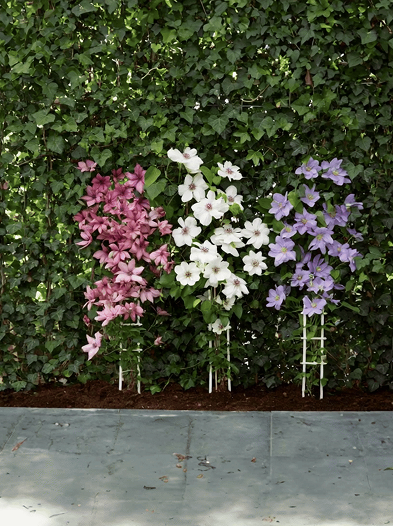
Keep foliage in the sun but roots cool with ground covers or stones.
Clematis thrives in temperatures between 10-25°C.
Ensure consistently moist soil, watering regularly, especially early on.
Apply slow-release fertilizer from March to May, but not during flowering.
Most Clematis varieties bloom in spring or summer with colorful flowers, while some evergreen types add greenery in winter. They are easy to grow, perfect for terraces or balconies, and naturally climb pergolas or scaffolds. Flowers range from small and delicate to large, over 20 cm wide, in shades of white, pink, lilac, blue, and violet, with both simple and double-petaled varieties.
In early spring, before new growth starts, trim dead or weak stems to encourage strong, healthy shoots. This helps the Clematis grow vigorously in the new season.
Once flowering ends, lightly trim back the plant to maintain its shape and remove spent flowers. This keeps the Clematis looking tidy and can encourage a second flush of blooms.
Our AI plant doctor offers assistance, but the ultimate responsibility remains with you.
Chat with our Lilly for tips on care, watering schedules, and more information about the Clematis
You’ve probably seen overgrown walls or fences covered in stunning flowers—now you can create your own! A flourishing vertical garden is easier than you think and doesn’t require much time or money. Even if you only have a balcony, you can enjoy the beauty of climbing plants!